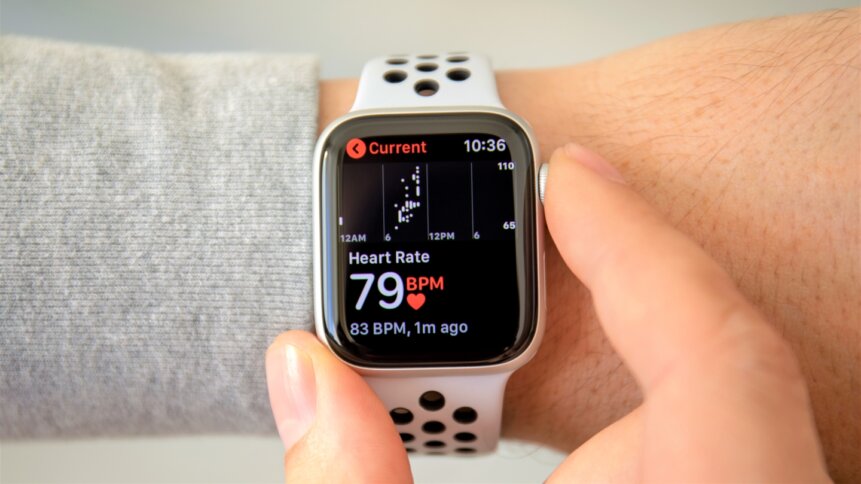Apple’s smartwatch gets ECG endorsement

With the gift-giving season approaching, desirable smartwatches will no doubt feature on many people’s wish lists. Black Friday too, is likely to encourage a jump in gadget sales. And for new owners, as well as existing device fans, wearables could turn out to be even more practical than users first thought. Findings published in Nature Medicine this month confirm that artificial intelligence algorithms, originally designed to work with 12-lead clinical electrocardiograms (ECGs), can navigate smartwatch health data too.
There was much excitement earlier in the year when ‘late-breaking’ research was presented at a medical conference in May and the publication of peer-reviewed data endorses the findings. It’s another significant moment for wearables makers, recognizing that devices are more than just an upsell on smartphones and tablets.
From the clinic to the home
“Currently, we diagnose ventricular dysfunction ― a weak heart pump ― through an echocardiogram, CT scan or an MRI, but these are expensive, time-consuming, and at times inaccessible,” said Paul Friedman, a consultant based at the Mayo Clinic in Rochester, US, and one of the authors of the study. “The ability to diagnose a weak heart pump remotely, from an ECG that a person records using a consumer device, such as a smartwatch, allows a timely identification of this potentially life-threatening disease at massive scale.”
READ NEXT

Oracle’s healthcare ambitions cloudy
During the global pandemic, there was a huge shift in diagnosis from the clinic to the home, and a big jump in the use of telemedicine. And these latest results show the merits of using smartwatch health data to make patient monitoring much more accessible and (relatively) affordable. Previously, devices had been shown to be capable of detecting heart rhythm disorders. But this study goes further and highlights the potential for smartwatches as an early warning system for signs of heart failure.
Two things came together to make the research discovery possible. The first step was the development of an app and backend infrastructure that made it straightforward for willing patients to share their smartwatch health data securely with clinicians. And the other key element was the modification made to the original AI algorithm so that it could run on a single-lead ECG recording (as found on smartwatches).
In total, 2,454 patients (aged between 18 and 90 years) from the Mayo Clinic took part in the study, uploading more than 125,000 Apple Watch ECGs to their electronic health records over a six-month period. And while the team was confident in the capability of the full 12-lead AI algorithm (licensed to Anumana) the big question was whether similar insight could be gathered from a narrower set of inputs.
The answer is yes, with researchers commenting that algorithms could be extrapolated to consumer wearable ECG recordings with relatively good accuracy. It’s welcome news for healthcare providers under pressure to offer more affordable and timely services to patients. “Solutions like this not only enable prediction and prevention of problems, but [could] eventually help diminish health disparities and the burden on health systems and clinicians,” said Bradley Leibovich, Medical Director for the Mayo Clinic Center for Digital Health, who also contributed to the research.
HealthKit data and more wearables studies
Writing up their work, the researchers revealed that Apple was not aware of the study until it had been completed. And the Cupertino headquartered tech giant provided no technical or funding support. One of the reasons that the group chose to use Apple Watch designs was the open access to raw ECGs available via Healthkit, which provides a central repository for health and fitness data on iPhone and Apple Watch.
The next steps for the Mayo Clinic team are to broaden its study globally and test the findings in more diverse populations. The ability to ‘inexpensively diagnose serious disease from your sofa’ is compelling and it’s unlikely that this is the last we’ll hear on the topic of consumer wearables as health monitoring devices.
Supporting the trend, Oura Health – a Finland-based developer of sleep-tracking smart rings – has rolled out a new algorithm for its wearable device. According to the firm, the updated sleep tracking analysis achieves 79% agreement with the gold standard – dubbed polysomnography (PSG) – based on the results of a recent study published in the journal Sensors.
Oura comments that wrist-based wearables are limited to 60-65% agreement when compared with PSG-base d classification, which breaks sleep down into ‘wake’, ‘light’, ‘deep’, and ‘rapid eye movement’ sessions. To support its claim, the developer refers to a study published in August 2022, carried out by researchers at Central Queensland University in Australia. This analysis compared sleep assessment using six commonly used wearable devices. The line up comprised an Apple Watch S6, a Garmin Forerunner 245 Music, a Polar Vantage V, the Oura Ring Generation 2, a WHOOP 3.0, and a Somfit device.









